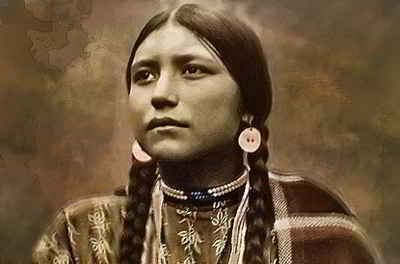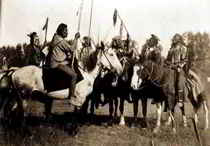State Early Histories (Prehistory): First Inhabitants
US First Early Inhabitants: Prehistory of the US

Prehistory is the period of human activity between the use of the first stone tools c. 3.3 million years ago and the invention of writing systems, the earliest of which appeared c. 5,300 years ago.
The history of the United States began with the settlement of Indigenous people before 10,000 BC. Numerous cultures formed. Native Americans, also known as American Indians, Indians, Indigenous Americans and other terms, are the indigenous peoples of the United States. The arrival of Christopher Columbus in 1492 started the European colonization of the Americas.
Indigenous peoples lived in what is now the United States for thousands of years and developed complex cultures before European colonists began to arrive, mostly from England, after 1600. Early history examines the archaeological record that tells the story of the first inhabitants of of the US. Native peoples of North and South America arrived from Asia long before, in a series of migrations that began perhaps as early as forty thousand years ago across the land bridge that connected Siberia and Alaska, and what lessons it might teach us about the early history of United States.
Learn about the early inhabitants or first inhabitants of each of the fifty (50) US States and what lessons it might teach us about the early history or the prehistory of the Native people of United States; the latter approach has become increasingly common in recent decades.
State Early Histories: US First Inhabitants Timelines
- Alabama Early History
- Alaska Early History
- Arizona Early History
- Arkansas Early History
- California Early History
- Colorado Early History
- Connecticut Early History
- Delaware Early History
- Florida Early History
- Georgia Early History
- Hawaii Early History
- Idaho Early History
- Illinois Early History
- Indiana Early History
- Iowa Early History
- Kansas Early History
- Kentucky Early History
- Louisiana Early History
- Maine Early History
- Maryland Early History
- Massachusetts Early History
- Michigan Early History
- Minnesota Early History
- Mississippi Early History
- Missouri Early History
- Montana Early History
- Nebraska Early History
- Nevada Early History
- New Hampshire Early History
- New Jersey Early History
- New Mexico Early History
- New York Early History
- North Carolina Early History
- North Dakota Early History
- Ohio Early History
- Oklahoma Early History
- Oregon Early History
- Pennsylvania Early History
- Rhode Island Early History
- South Carolina Early History
- South Dakota Early History
- Tennessee Early History
- Texas Early History
- Utah Early History
- Vermont Early History
- Virginia Early History
- Washington Early History
- Washington, DC Early History
- West Virginia Early History
- Wisconsin Early History
- Wyoming Early History





